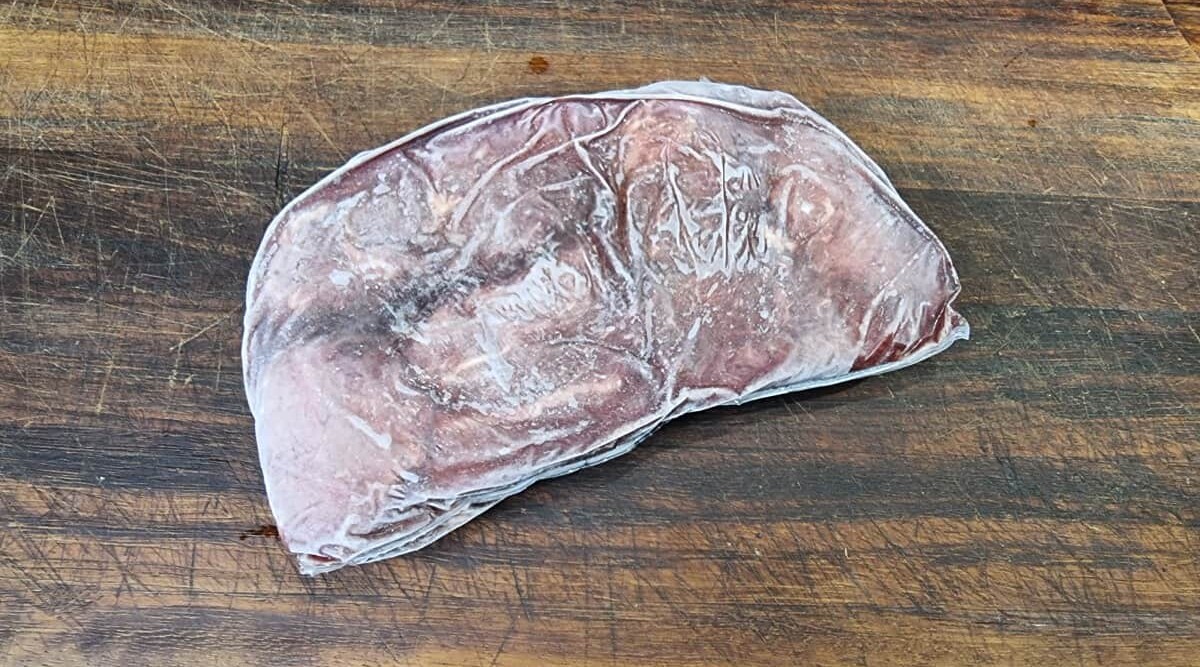
Let’s discover the best way to thaw a frozen steak, plus other methods you can use in a pinch, and why it’s vital to defrost steaks safely.
This past spring and summer, I supported local farmers and ranchers by purchasing CSA (Community-supported agriculture) shares from an amalgamator. Every month, I picked up a load of fresh meat ranging from ribs to chops to some dynamite steaks.
Thanks to a combination of crummy weather and a busy family life, it’s now well into fall, and I have a freezer rammed full of meat.
And while some of my carnivorous comrades might turn up their noses at frozen steaks, I know something either they don’t, or they choose to ignore: steak that’s properly frozen AND properly defrosted is indistinguishable from fresh.
If you’ve got a bunch of frozen steaks or are thinking about putting a bunch away for the future, you need to know the best and safest way to defrost them.
Today, I’ll share with you our top technique for thawing steak and why it’s our method of choice. Plus, we have four other ways to thaw a steak ranked in order of preference.
Importantly, we’ll also tell you the one way you must NEVER thaw a steak and why.
Now that we’re warmed up, let’s get right to what you came here for.
Key Takeaways
- The very best way to defrost a steak, and our top recommendation, is to let it thaw gradually in the fridge for however long that takes.
- If you’re in too much of a hurry, the next best choice while preserving quality is to immerse the steak in cold water (sealed, of course) until it’s thawed.
- Warm water or a microwave can be used, but you lose quality, and caveats are discussed below.
- Never leave a steak out on the kitchen counter to defrost, it goes against all food safety rules.
- You can cook a steak from frozen! We discuss how below.
Jump to:
- 1 Key Takeaways
- 2 Safety First!
- 3 Is Thawing Steak in Hot Water or a Microwave Ever Recommended?
- 4 How Long Will My Steak Take to Thaw?
- 5 Can You Simply Cook a Steak from Frozen?
- 6 How to Defrost Steak, Methods from Best to Worst
- 7 What to Avoid — the One Way We Never Defrost Steak!
- 8 How do I Know My Steak is Fully Defrosted?
- 9 Final Thoughts
Safety First!
Any time we work with raw meat, no matter the protein or the cut, it’s vital to keep food safety temperatures top of mind.
It is virtually impossible to eliminate all food-borne pathogens, the microorganisms that can cause illnesses. Even in the cleanest abattoirs, butcher shops, and grocery stores, bacteria may spread from tools to animals, from the animal’s interior to the exterior, and from one animal to another.
I’m not saying this to put you off; it’s just a reminder that we can’t ever take our eye off the ball when it comes to food safety.
Highway to the Danger Zone
Since we must assume bacteria are present, we must reduce the risk of allowing them to grow and spread. Temperature is our first line of defense, whether it be very hot or very cold.
Bacteria are most likely to thrive in the so-called “Danger Zone,” which runs from 40 °F to 140 °F. Therefore, it’s vital that you keep your steak out of this temperature range as much as possible.
When we’re cooking steak, the searing process raises the external temperature above 140 °F quickly, killing or neutralizing the little nasties that lurk on the surface. However, they can’t penetrate the surface, which is why we can enjoy steak rare — or even blue rare steak — with an internal temperature of around 120 °F.
When storing steak, we want to keep the surface temperature below 40 °F. Naturally, frozen steak is well under this mark.
To stay safe from bacteria, we ideally want to thaw our steak without ever letting it get over 40 °F until it hits the grill.
Is Thawing Steak in Hot Water or a Microwave Ever Recommended?
Neither of these is a preferred method for defrosting a frozen steak. However, if you’re in a time crunch and you absolutely, positively must thaw it as quickly as possible, either will do the job.
Check out the rundown of techniques from best to worst a little further down in the article!
How Long Will My Steak Take to Thaw?
The answer to this question is largely dependent on the method you choose. Once that’s settled, the cut of beef you have, or more specifically the thickness or weight of your steak comes into play.
Thin steaks such as flank steak, skirt steak, or hanger steak are obviously going to defrost far more quickly than a really thick porterhouse or ribeye steak.
Here’s a handy reference chart for each method covered in this article. Scroll down to the How to Defrost Your Steak, Methods From Best to Worst section for more details. (All times are approximate.)
| Defrost Method | Time for 1” Thick | Time for 1.5” Thick | Time for 2” Thick |
|---|---|---|---|
| Refrigerator | 12 hours | 18–24 hours | Up to 30 hours |
| Cold water bath | 1 hour | 2 hours | Up to 4 hours |
| Warm water bath | Up to 20 min | Max 30 min | Not recommended |
| Microwave | 8–10 min/lb | 8 –10 min/lb | 8–10 min/lb |
Can You Simply Cook a Steak from Frozen?
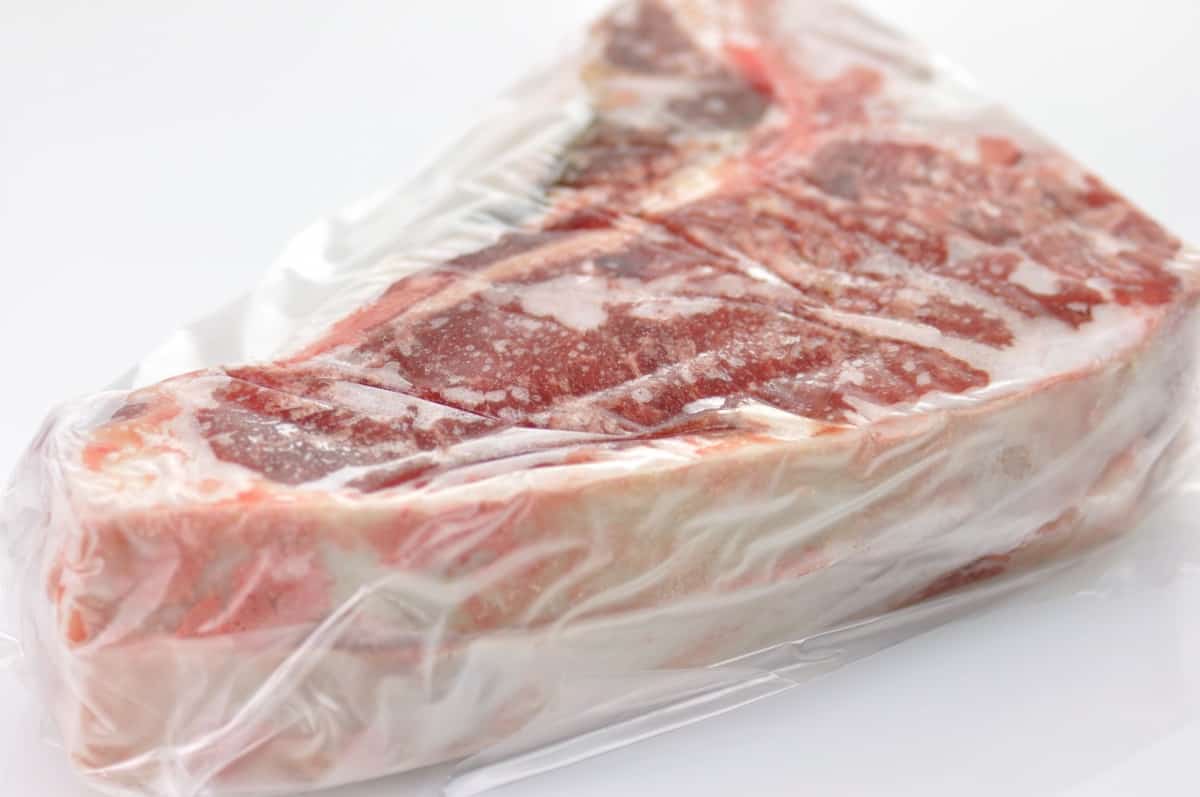
No time to defrost? That’s ok: it IS possible to cook a steak right out of the freezer!
I won’t go into details here — but if you want to know how it’s done, we’ve got your complete guide to Grilling Frozen Steak right here.
As with anything, there are pros and cons to grilling a frozen steak.
Starting with the pros, you’ll find you lose less moisture, and you’ll develop a more flavorful seared crust with a juicy interior because there’s far less risk of overcooking the middle. Plus, it takes less time than waiting for a steak to defrost. BUT, you’ll only realize the pros IF you do this just right.
Looking at the cons, the actual cooking time is considerably longer when your steak is frozen. Give yourself twice as much time, on average.
You also increase the risk of flare-ups, as dripping water carries fatty juices down onto the coals or burners.
How to Defrost Steak, Methods from Best to Worst
Starting with our most recommended method and ending with our least favorite, here are all the ways to thaw a steak.
I’ve included an equipment list and step-by-step instructions for each, plus a guide to how long each takes, and the pros and cons to be aware of.
In the Fridge
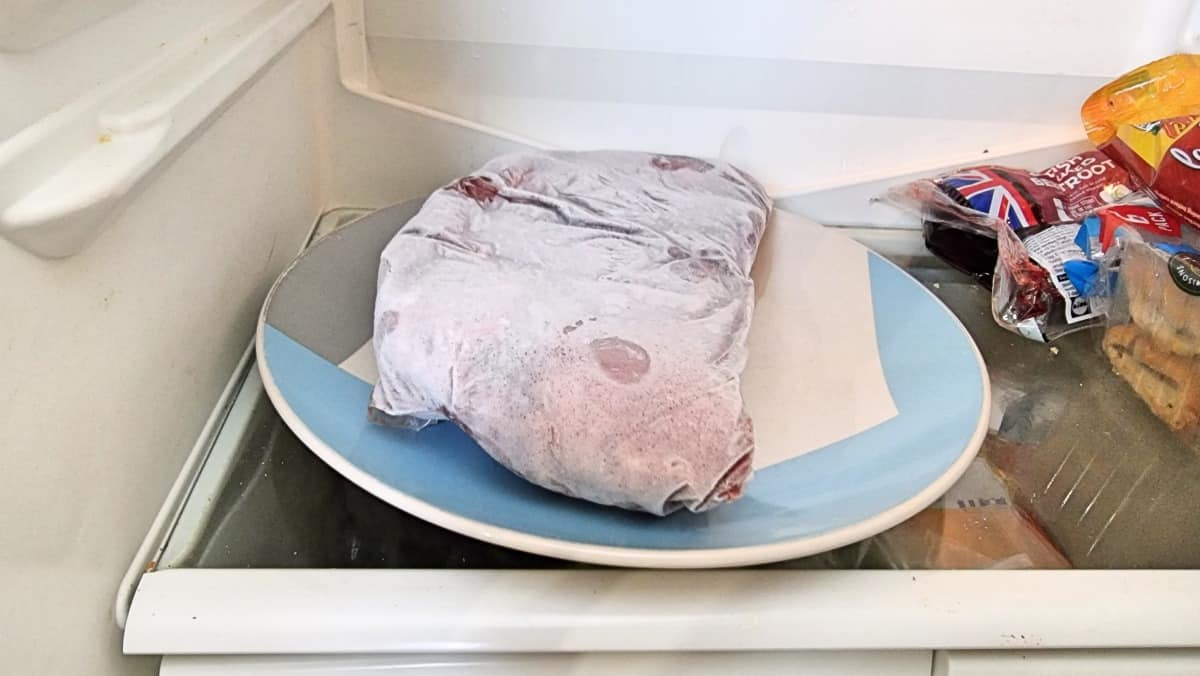
Our number one choice, and also the top pick of every expert on cooking steak.
Things You Need
- A refrigerator set to ~38 °F
- A clean plate or platter
- Something to wrap your steak in (if it’s not already wrapped)
Time Required
For steaks 1” thickness or less, allow about 12 hours. Thicker steaks up to 1.5” thick will take around 18 – 24 hours. Steaks 2” or thicker may need up to 30 hours to thoroughly defrost.
How To
If the steak is not already tightly wrapped, do so now. You could opt to vacuum seal it, but a tight covering of cling wrap or butcher paper will do the trick. Failing this, you could place the steak in a small, sealed container.
Once wrapped, place the steak on a clean platter or plate with raised sides to contain any juices that may leak out.
Do not stack steaks on top of each other, and allow clearance between steaks for unimpeded airflow. Failure to do so will slow down the process and may result in uneven thawing and poor results when cooking.
Place the steaks on their plates at the lowest point possible in your fridge to prevent drippings from contaminating other food.
Avoid placing steaks in the door of your fridge or at the very back. These locations are known for being warm and cold spots, respectively.
If the temperature in the door gets over 39 °F, you risk activating bacteria. The rear of some fridges is much colder than the center, which may increase the time needed to thaw. If you’ve noticed liquids freezing at the back of your fridge, keep your steaks well forwards. It’s a good idea to check for warm and cold spots in your fridge and freezer with a thermometer, especially if they’re older units.
Pros
- This is the safest method for defrosting a steak.
- Zero time spent in the Danger Zone.
- It’s virtually hands-free, too, and the less you handle raw meat, the better.
Cons
- Thawing steak in the fridge is, I’m sorry to say, the slowest of all methods.
- You’ll need to plan in advance to be sure your steaks are defrosted and ready for the grill, so this won’t work for a spontaneous steak cookout.
Cold Water Method
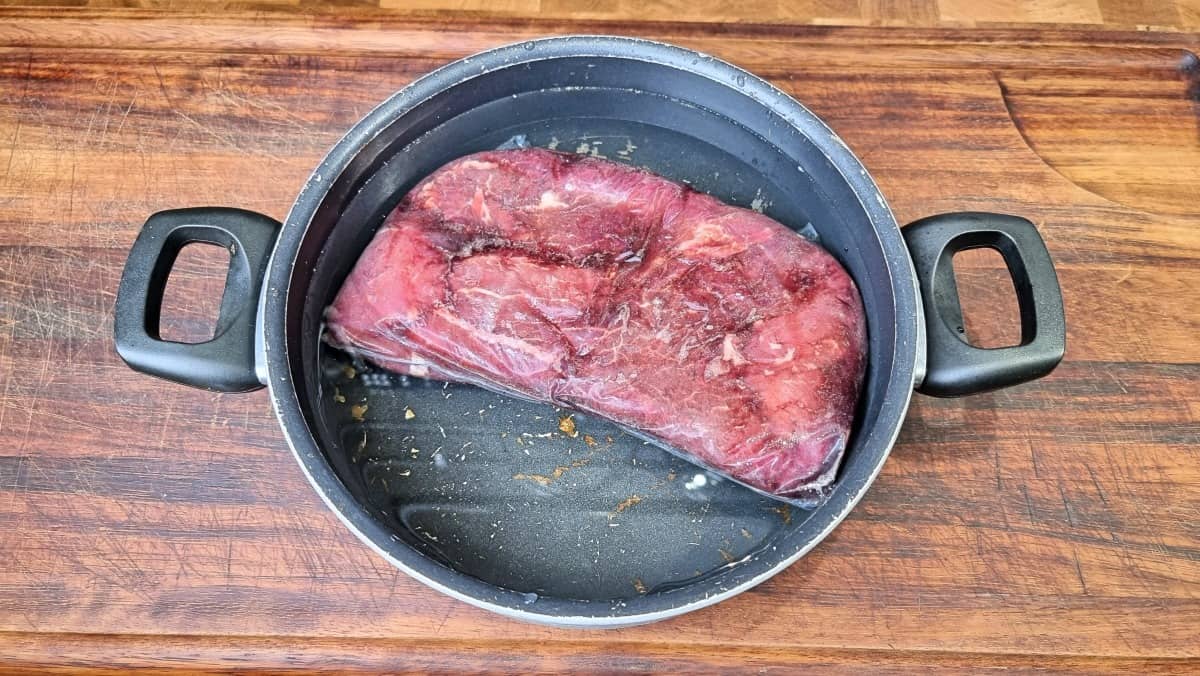
The next best choice, and with a notable advantage over the fridge method.
Things You Need
- A large bowl or pot (or multiple bowls for more than one steak)
- A sealable, leak-proof bag (one per steak)
- A heavy plate small enough to fit in the bowl or pot
Time Required
Steaks of 1” thickness or less may defrost in as little as an hour. Larger steaks around 1.5” thick will take more like 2 hours, while thick-cut steaks of 2 inches or more thick could take up to 4 hours.
How To
If the steak(s) to be thawed are not already packaged in vacuum-sealed plastic, place each steak individually into a waterproof, sealable bag.
Fill a bowl large enough to submerge the steak with the coldest water you have access to and place it on your kitchen counter, preferably near the sink. You’ll need a separate bowl for each steak. Alternatively, you could use your kitchen sink, but then it’s tied up for the next few hours.
Immerse the steak in the water, place the plate on top of it to keep it submerged, and then wait.
Check the temperature of the water every half an hour; if it feels like it’s getting too cold due to the steak cooling the water, or if the water has warmed a little, dump the water out and refill with cold water. We do this to speed up the defrosting, and to avoid allowing the steak to sit in the Danger Zone.
Instead of only placing the steak in water and changing it frequently, you can set the bowl in the sink under a very, very slowly running tap. This will overflow into the sink while constantly changing the water in the bowl, so it doesn’t get too cold (losing its defrosting ability) or too warm and up to room temperature if the steak is fully defrosted.
If you don’t have a suitable plate to keep the steak under the water, be sure to flip it over occasionally to ensure even thawing.
Pros
- The number one reason to choose this method is speed — this is many times faster than thawing in the fridge.
- Done correctly, it’s easy to keep the steak safe during the thawing process.
Cons
- It’s far more hands-on and labor-intensive than popping a steak in the fridge overnight.
- Also, if you don’t have a perfect seal on the wrapping, you risk getting your steak wet (not ideal) or even spreading contaminated water (potentially dangerous).
Warm Water Method
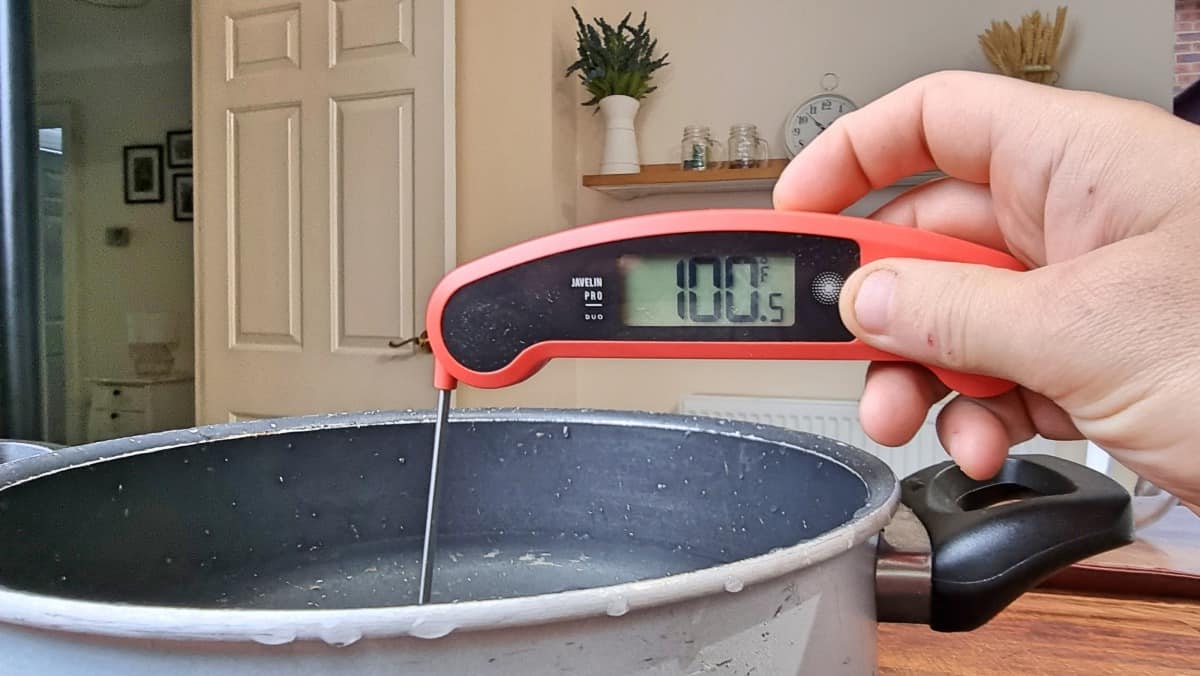
Still not fast enough? We don’t love this option, but it could help you in a pinch — like if you promised someone a steak dinner but forgot it was today!
Things You Need
- A large bowl or pot (or multiple bowls for more than one steak)
- A sealable, leak-proof bag (one per steak)
- A heavy plate small enough to fit in the bowl or pot
- A digital thermometer
Time Required
Very thin steaks (1” thickness or less) may be ready to cook in under 20 minutes. For steaks approximately 1.5-inches thick, allow a maximum of 30 minutes. This method is not recommended for steaks 2 inches thick or larger.
How To
Fill the bowl or pot with warm water — aim for about 100 °F. You’ll likely need to use an instant read thermometer to get this right; the recommended setting for a household water heater is 120 °F, which is too hot.
Place the steak in the container (as before, one steak per container, or use the sink if needed) and weigh it down with the plate. Stir occasionally to keep the warm water flowing around the steak and prevent cold spots from forming.
You shouldn’t need to refill the hot water since the thawing time is so short.
Pros
- The only thing this method has going for it is speed. If you need to go from frozen to grill-ready ASAP, it’s tough to beat 30 minutes or less.
Cons
- You have to be on top of things with this method. You can’t leave it for too long, the temperature has to be just right.
- It may ultimately not even work for a very thick steak.
In the Microwave
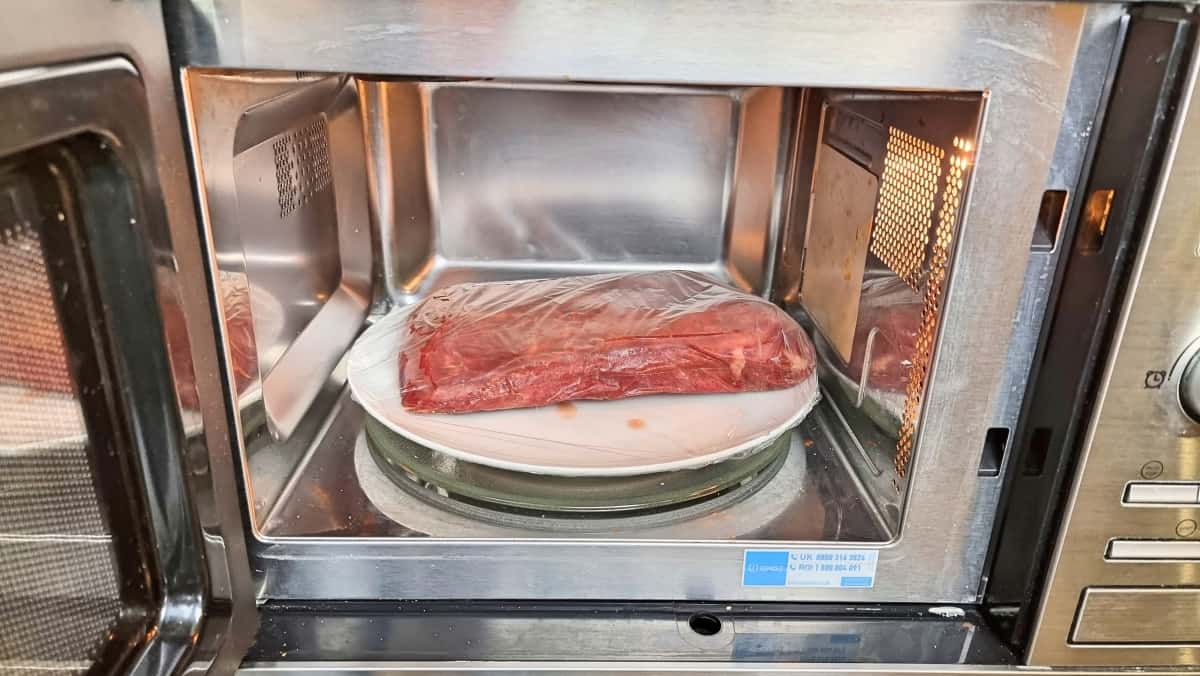
As with most culinary applications, the microwave method is acceptable, but just barely. However, when there is absolutely no other way, your microwave might save the day.
Things You Need
- A clean, microwave-safe plate (one per steak)
- Plastic wrap or a plastic cover
- Or, you can choose a glass container with a lid
- Digital thermometer
Time Required
Microwave manufacturers recommend defrosting any meat for 8 to 10 minutes per-pound.
Some units allow you to input the meat type and weight, based on which it will automatically choose a time.
For microwaves without a “Defrost” button, adjust the power level to 20–30% and set the timer based on the weight of your steak.
How To
Remove the packaging from your steak. If using a plate, wrap the steak loosely in plastic cling wrap, or cover with a microwave safe lid. For glass dishes, place the unwrapped steak in the dish and cover it with the appropriate lid. (Always wash your hands after handling raw meat.)
Set the defrost function on your microwave as described in the ‘Time Required’ section above. For microwaves without a turntable, manually rotate your steak once every 2 – 3 minutes.
Every 1 – 2 minutes, check the temperature of your steak with a digital thermometer to ensure it hasn’t entered the Danger Zone or started cooking.
Pros
- This method frees up counter space, and it’s much faster than either the fridge or cold water methods.
Cons
- This is an extremely hands-on way to thaw a steak that will keep you very busy and unable to attend to anything else.
- There’s a high risk of accidentally blowing past “thawed” and transitioning from defrosting to cooking. A partially cooked steak is pretty much a disaster.
What to Avoid — the One Way We Never Defrost Steak!
The one way you must never, ever defrost your steak is by leaving it out on the kitchen counter. Why?
As we discussed before, bacteria are very happy when the temperature is between 40 °F and 140 °F. So, if you cook the steak when the core is above the freezing mark but below 40 °F, won’t it be safe? Absolutely not!
By the time the center of the steak thaws out, the exterior will be well above 40 °F as physics and the Laws of Thermodynamics and all that sciencey stuff work to bring the steak up to room temperature. So, while the center thaws, the surface becomes a playground for illness-causing bacteria.
The bottom line is that frozen steak left out on the counter until it thaws is only fit for the garbage or organic waste bin.
How do I Know My Steak is Fully Defrosted?
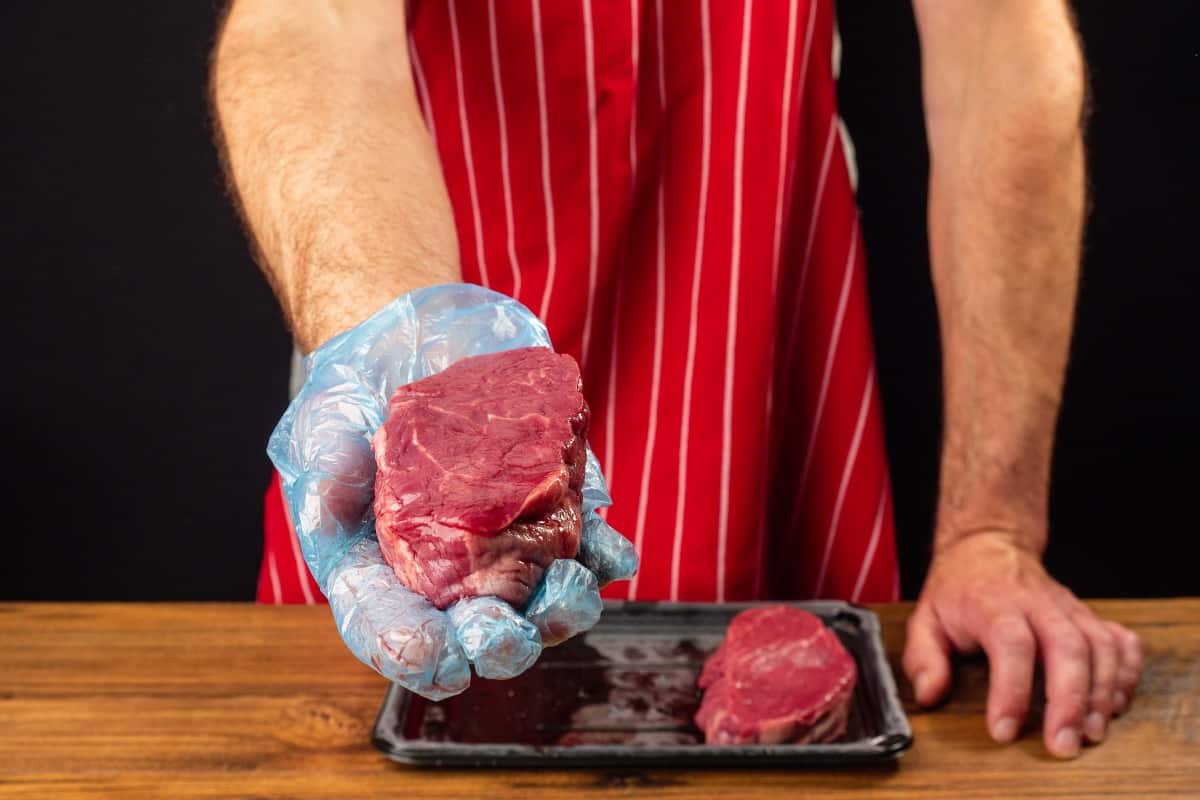
The easiest way to determine if your steak is defrosted sufficiently to take it to the grill is with a touch test.
Give the surface of your steak a poke with your finger (don’t forget to practice food safety — wear a glove or wash immediately after). There should be just a bit of give, but overall, the steak should still feel firm. Also, we don’t want to see any ice on the surface.
If your steak feels right, give it a final check with your digital thermometer to read the temperature at the center. The optimal result is about 39 °F — that’s above freezing, but not into the Danger Zone. If the core is in the Danger Zone, that means the surface has been there for a much longer time, and, as we know, that’s risky business.
Thanks to the Steak School by Stanbroke for their excellent description of the touch test for defrosted steak.
Final Thoughts
While the fridge is the best place to thaw frozen steak, other methods are available to you if you don’t have time to wait. Isn’t it great to have options? And lots of steaks?
If you have any comments or questions about how to defrost frozen steak, please drop a line or leave a comment, and we’ll do our best to answer.
And for tons more need-to-know tips, tricks, and techniques for buying, storing, and grilling steak, we invite you to browse the site or make use of that search tool. We’re working hard to be the ultimate go-to site for steaks and more!
Thanks for reading, and good luck with that frozen steak. (Not that you need it now!)




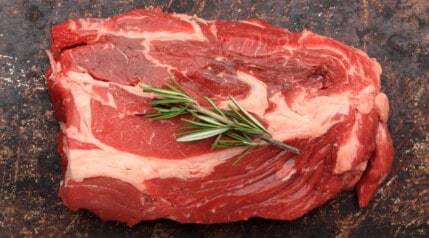
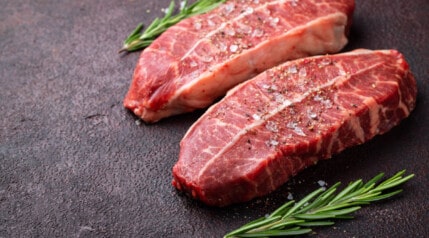
0 Comments